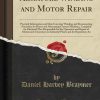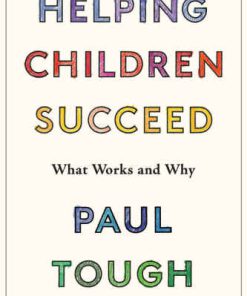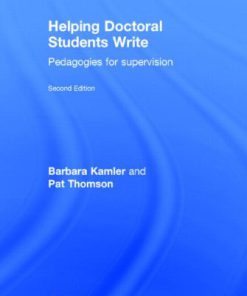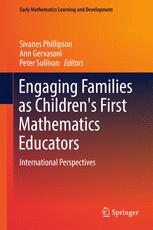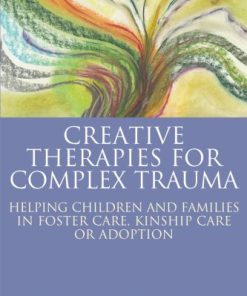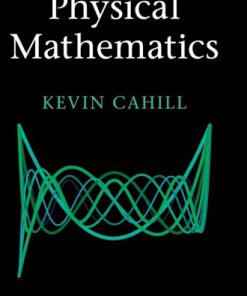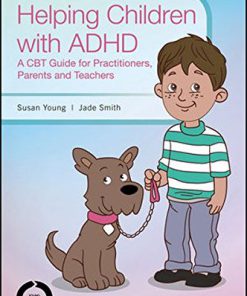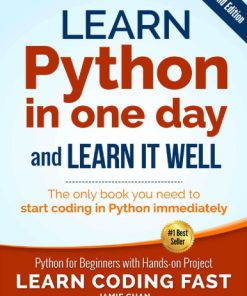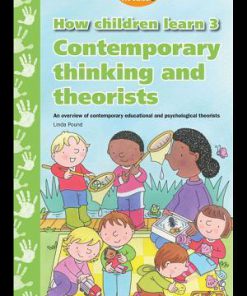Helping Children Learn Mathematics 2nd Edition by Robert Reys 0730363095 9780730363095
$50.00 Original price was: $50.00.$25.00Current price is: $25.00.
Helping Children Learn Mathematics 2nd Edition by Robert E. Reys – Ebook PDF Instant Download/DeliveryISBN: 0730363095, 9780730363095
Full download Helping Children Learn Mathematics 2nd Edition after payment.
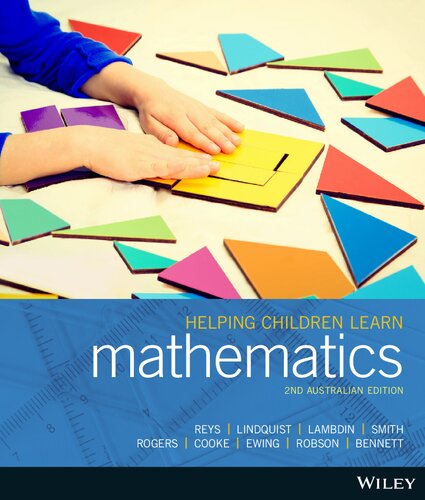
Product details:
ISBN-10 : 0730363095
ISBN-13 : 9780730363095
Author: Robert E. Reys
Introductory education, teaching maths
Helping Children Learn Mathematics 2nd Table of contents:
Chapter 1: School mathematics in a changing world
Introduction
1.1 What is mathematics?
1.2 What determines the mathematics being taught?
Needs of the subject
Needs of the child
Needs of society
Your role
1.3 Where can you turn?
National guidelines for school mathematics
State and local guidelines
Research
Cultural and international resources
History
Textbooks and other materials
Electronic materials
Professional organisations
Professional development
Other teachers
Concept check
Making connections
A glance at where we’ve been
Things to do: from what you’ve read
Things to do: going beyond this text
References
Acknowledgements
Chapter 2: Helping children learn mathematics with understanding
Snapshot of a lesson
Helping children learn mathematics with understanding
Introduction
2.1 How can we support the diverse learners in our classrooms?
Creating a positive learning environment
Avoiding negative experiences that increase anxiety
Establishing clear expectations
Treating all students as equally likely to have aptitude for mathematics
Helping students improve their ability to retain mathematical knowledge and skills
2.2 Meaningful connections between procedural and conceptual knowledge
2.3 How do children learn mathematics?
Building behaviour
Constructing understanding
2.4 How can we help children make sense of mathematics?
Recommendation 1: Teach to the developmental characteristics of students
Recommendation 2: Actively involve students
Recommendation 3: Move learning from concrete to abstract
Recommendation 4: Use communication to encourage understanding
Concept check
Making connections
A glance at where we’ve been
Things to do: from what you’ve read
Things to do: going beyond this text
Children’s literature connections
References
Acknowledgements
Chapter 3: Planning and teaching
Snapshot of a lesson
Planning and teaching
Introduction
3.1 Effective planning and preparation for teaching: using strategic questions to inform teaching practice
What mathematics content knowledge and pedagogical content knowledge do I know and need?
How will I differentiate my teaching to ensure that all students are learning?
What do my students already know?
What kinds of tasks will I give my students?
How will I encourage my students to talk, what kinds of questions will I ask and how will I group my students?
What materials will my students and I use?
3.2 Planning for effective teaching
The importance of planning
3.3 Levels of planning
Planning for the year
Planning for units
Planning for daily lessons
3.4 Planning different types of lessons
Investigative lessons
Direct instruction lessons
Explorations
3.5 Meeting the needs of all students
Teaching students from other cultures
Teaching English-language learners
Teaching students with identified special needs
3.6 Assessment and analysis in planning
Concept check
Making connections
A glance at where we’ve been
Things to do: from what you’ve read
Things to do: going beyond this text
Children’s literature connections
References
Acknowledgements
Chapter 4: Enhancing learning and teaching through assessment and feedback
Snapshot of a lesson
Enhancing learning and teaching through assessment and feedback
Introduction
4.1 Enhancing learning and teaching
Assessment for learning
Assessment as learning
4.2 Gathering information on student learning
Assessment of learning
Making teaching and learning decisions
Monitoring student progress
Evaluating student achievement
4.3 Ways to assess students’ learning and dispositions
Observation
Questioning
Interviewing
Performance tasks
Self-assessment and peer assessment
Work samples
Portfolios
Writing
Teacher-designed paper-and-pencil tests
Standardised achievement tests
4.4 Keeping records and communicating about assessments
Recording the information
Communicating the information
Concept check
Making connections
A glance at where we’ve been
Things to do: from what you’ve read
Things to do: going beyond this text
Children’s literature connections
References
Acknowledgements
Chapter 5: Processes of doing mathematics
Snapshot of a lesson
Processes of doing mathematics
Introduction
5.1 Problem solving
5.2 Reasoning and proof
Reasoning is about making generalisations
Reasoning leads to a web of generalisations
Reasoning leads to mathematical memory built on relationships
Learning through reasoning requires making mistakes and learning from them
5.3 Communication
5.4 Connections
5.5 Representations
Creating and using representations
Selecting, applying and translating among representations
Using representations to model and interpret phenomena
Concept check
Making connections
A glance at where we’ve been
Things to do: from what you’ve read
Things to do: going beyond this text
Children’s literature connections
References
Acknowledgements
Chapter 6: Helping children with problem solving
Snapshot of a lesson
Helping children with problem solving
Introduction
6.1 What is a problem and what is problem solving?
6.2 Teaching mathematics through problem solving
Factors for success in problem solving
Choosing appropriate problems
Finding problems
Having students pose problems
Using calculators and computers
6.3 Strategies for problem solving
Act it out
Make a drawing or diagram
Look for a pattern
Construct a table
Guess and check
Work backward
Solve a similar but simpler problem
6.4 The importance of looking back
Looking back at the problem
Looking back at the answer
Looking back at the solution process
Looking back at one’s own thinking
6.5 Helping all students with problem solving
Managing time
Managing classroom routines
Managing student needs
Concept check
Making connections
A glance at where we’ve been
Things to do: from what you’ve read
Things to do: going beyond this text
Children’s literature connections
References
Acknowledgements
Chapter 7: Counting and number sense in early childhood and primary years
Snapshot of a lesson
Counting and number sense in early childhood and primary years
Introduction
7.1 Developing number sense
Prenumber concepts
Early number development
Counting
7.2 Counting principles
Counting stages
7.3 Counting strategies
Counting on
Counting back
Skip counting
Counting practice
Developing number benchmarks
Understanding 1–5
7.4 Cardinal, ordinal and nominal numbers
7.5 Writing numerals
Concept check
Making connections
A glance at where we’ve been
Things to do: from what you’ve read
Things to do: going beyond this text
Children’s literature connections
References
Acknowledgements
Chapter 8: Extending number sense: place value
Snapshot of a lesson
Extending number sense: place value
Introduction
8.1 Our numeration system
8.2 Nature of place value
Modelling ungrouped and pre-grouped materials
Modelling proportional and non-proportional materials
Grouping and trading
8.3 Beginning place value
A place to start
8.4 Consolidating place value
Regrouping and renaming
8.5 Extending place value
Counting and patterns
8.6 Reading and writing numbers
8.7 Rounding
Concept check
Making connections
A glance at where we’ve been
Things to do: from what you’ve read
Things to do: going beyond this text
Children’s literature connections
References
Acknowledgements
Chapter 9: Operations: meanings and basic facts
Snapshot of a lesson
Operations: meanings and basic facts
Introduction
9.1 Helping children develop number sense and computational fluency
Facility with counting
Experience with a variety of concrete situations
Familiarity with many problem contexts
Experience in talking and writing about mathematical ideas
9.2 Developing meanings for the operations
Addition and subtraction
Multiplication and division
9.3 Mathematical properties
9.4 Overview of learning the basic facts
Start where the children are
Build understanding of the basic facts
Focus on how to remember facts
9.5 Thinking strategies for basic facts
Thinking strategies for addition facts
Thinking strategies for subtraction facts
Thinking strategies for multiplication facts
Thinking strategies for division facts
Concept check
Making connections
A glance at where we’ve been
Things to do: from what you’ve read
Things to do: going beyond this text
Children’s literature connections
References
Acknowledgements
Chapter 10: Mental computation, calculators and estimation
Snapshot of a lesson
Mental computation, calculators and estimation
Introduction
10.1 Calculators
Using calculators requires thinking
Using calculators can raise student achievement
Calculators are not always the fastest way of doing computations
Calculators are useful for more than doing computations
10.2 Mental computation
Strategies and techniques for mental computation
Encouraging mental computation
10.3 Estimation
Background for estimating
Front-end estimation
Adjusting
Compatible numbers
Flexible rounding
Clustering
Choosing estimation strategies
Concept check
Making connections
A glance at where we’ve been
Things to do: from what you’ve read
Things to do: going beyond this text
Children’s literature connections
References
Acknowledgements
Chapter 11: Solving problems with written strategies
Snapshot of a lesson
Solving problems with written strategies
Introduction
11.1 Learning strategies that lead to understanding
Using materials
Using place value
11.2 Addition
Standard addition algorithm
11.3 Subtraction
Standard subtraction algorithm
Partial-difference subtraction algorithm
11.4 Multiplication
Multiplication with 1-digit multipliers
Partial-products multiplication algorithm
Lattice multiplication algorithm
Multiplication by 10 and multiples of 10
Multiplication with zeros
Multiplication with 2-digit multipliers
Multiplication with large numbers
11.5 Division
Division with 1-digit divisors
Distributive algorithm
Subtractive algorithm
Division with 2-digit divisors
Making sense of division with remainders
11.6 Finding the balance between practice and proficiency
Using operations to check answers
Concept check
Making connections
A glance at where we’ve been
Things to do: from what you’ve read
Things to do: going beyond this text
Children’s literature connections
References
Acknowledgements
Chapter 12: Fractions and decimals: meanings and operations
Snapshot of a lesson
Fractions and decimals: meanings and operations
Introduction
12.1 Conceptual development of fractions
Three meanings of fractions
Models of the part–whole meaning
Making sense of fractions
Ordering fractions and equivalent fractions
Mixed numbers and improper fractions
12.2 Operations with fractions
Addition and subtraction
Multiplication
Division
12.3 Conceptual development of decimals
Relationship to common fractions
Relationship to place value
Ordering and rounding decimals
12.4 Operations with decimals
Addition and subtraction
Multiplication and division
Concept check
Making connections
A glance at where we’ve been
Things to do: from what you’ve read
Things to do: going beyond this text
Children’s literature connections
References
Acknowledgements
Chapter 13: Ratio, proportion and percentages: meanings and applications
Snapshot of a lesson
Ratio, proportion and percentages: meanings and applications
Introduction
13.1 Ratios
13.2 Proportions
13.3 Percentages
Understanding percentages
Applying percentages
Concept check
Making connections
A glance at where we’ve been
Things to do: from what you’ve read
Things to do: going beyond this text
Children’s literature resources
References
Acknowledgements
Chapter 14: Extending students with number theory
Snapshot of a lesson
Extending students with number theory
Introduction
14.1 Number theory in primary school mathematics
14.2 Number theory topics for primary school students
Odds and evens
Factors and multiples
Primes and composites
Prime factorisation
Divisibility
14.3 Other number theory topics
Polygonal numbers
Relatively prime pairs of numbers
Modular arithmetic
Pascal’s triangle
Pythagorean triples
Fibonacci sequence
Concept check
Making connections
A glance at where we’ve been
Things to do: from what you’ve read
Things to do: going beyond the text
Children’s literature connections
References
Acknowledgements
Chapter 15: Algebraic thinking
Snapshot of a lesson
Algebraic thinking
Introduction
15.1 Problems, patterns and relations
Problems
Patterns
Relations
15.2 Language and symbols of algebra
Equality and inequality
Variables
Expressions and equations
15.3 Modelling, generalising and justifying
Routine problems
Patterns
Nonroutine problems
Relations: functions
Relations: properties of numbers
Another look at modelling, generalising and justifying
Concept check
Making connections
A glance at where we’ve been
Things to do: from what you’ve read
Things to do: going beyond this text
Children’s literature connections
References
Acknowledgements
Chapter 16: Geometry
Snapshot of a lesson
Geometry
Introduction
16.1 The geometry of 2-dimensional shapes and 3-dimensional objects
3-dimensional objects
2-dimensional shapes
16.2 Locations and spatial relationships
16.3 Transformations
Congruence
Similarity
16.4 Visualisation and spatial reasoning
Using geometric physical and pictorial materials
Using mental images
Concept check
Making connections
A glance at where we’ve been
Things to do: from what you’ve read
Things to do: going beyond this text
Children’s literature connections
References
Acknowledgements
Chapter 17: Measurement
Snapshot of a lesson
Measurement
Introduction
17.1 The measurement process
17.2 Identifying attributes and comparing
Length
Capacity
Mass (weight)
Area
Volume
Angle
Time
Temperature
Other attributes
17.3 Measurement concepts for all units
17.4 Measuring with informal units
Length
Area
Volume and capacity
Mass
Time
Temperature
Angle
17.5 Measuring with formal units
Length
Area
Volume and capacity
Time
Temperature
Angle
Scaled instruments
People also search for Helping Children Learn Mathematics 2nd:
helping children learn mathematics pdf
helping children learn mathematics 3rd australian edition
helping children learn mathematics 4th edition pdf
helping children learn mathematics 4th edition pdf free
helping children learn mathematics ebook
Tags: Helping Children, Mathematics, Robert Reys,
You may also like…
Education Studies & Teaching
Helping Children Succeed What Works and Why 1st edition by Paul Tough 0544935310 9780544935310
Reference - Writing
Helping Doctoral Students Write Pedagogies for supervision 2nd Edition Barbara Kamler
Politics & Philosophy - Social Sciences
Education Studies & Teaching - School Education & Teaching
Psychology - Psychotherapy
Relationships & Lifestyle - Psychological Self-Help
Computers - Programming
Learn Python in One Day and Learn It Well 2nd Edition Jamie Chan
Education Studies & Teaching
How Children Learn Book 3 Contemporary Thinking and Theorists Linda Pound


